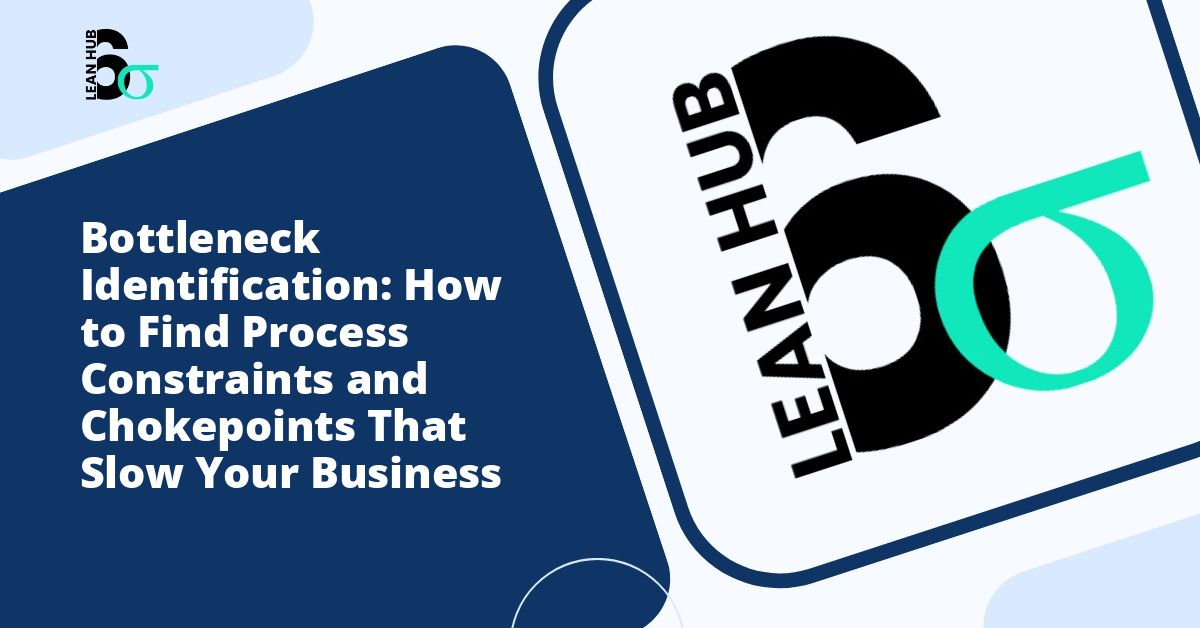In any business process, workflow efficiency determines success. Whether you operate a manufacturing facility, manage a software development team, or run a service organization, identifying and eliminating bottlenecks can dramatically improve productivity, reduce costs, and enhance customer satisfaction. Understanding how to recognize and address process constraints is fundamental to operational excellence and continuous improvement.
Understanding Process Bottlenecks and Their Impact
A bottleneck occurs when the capacity of a process is limited by a single constraint or chokepoint. Much like water flowing through a bottle, the entire system can only move as quickly as its narrowest point allows. These constraints restrict throughput, create delays, increase wait times, and ultimately reduce the overall efficiency of your operations. You might also enjoy reading about Fishbone Diagram Alternative Methods: Text-Based Root Cause Analysis for Problem Solving.
The impact of bottlenecks extends beyond simple delays. They create ripple effects throughout your organization, including increased work-in-progress inventory, frustrated employees, missed deadlines, and dissatisfied customers. The financial implications can be substantial, as resources remain underutilized while waiting for the bottleneck to clear. You might also enjoy reading about Root Cause Analysis in Six Sigma: 7 Proven Techniques to Find the Real Problem.
Common Types of Bottlenecks in Business Processes
Before you can address bottlenecks, you must understand their various forms. Bottlenecks generally fall into several categories, each requiring different identification and resolution strategies. You might also enjoy reading about Hypothesis Testing in Six Sigma: A Simple Guide for Non-Statisticians.
Resource Bottlenecks
These occur when you lack sufficient resources to meet demand. Resource constraints might include inadequate equipment, insufficient personnel, limited physical space, or restricted budget allocations. A manufacturing line with one slow machine that cannot keep pace with other stations exemplifies this type of bottleneck.
Process Bottlenecks
Process bottlenecks arise from inefficient workflows, unnecessary steps, or poorly designed procedures. These often result from outdated methods that have never been optimized or processes that have evolved organically without proper planning. Excessive approval requirements or redundant quality checks can create significant process bottlenecks.
System Bottlenecks
Technology limitations frequently create system bottlenecks. Outdated software, inadequate server capacity, slow network connections, or incompatible systems that require manual data transfer can all restrict process flow. These technological constraints become increasingly problematic as business volumes grow.
The Lean Six Sigma Approach to Bottleneck Identification
The lean six sigma methodology provides a structured framework for identifying and eliminating process constraints. This data-driven approach combines lean manufacturing principles with Six Sigma quality management techniques to create more efficient, higher-quality processes.
Within lean six sigma, the DMAIC framework (Define, Measure, Analyze, Improve, Control) offers a systematic pathway for addressing bottlenecks. The recognize phase, which aligns with the Define and Measure stages, is particularly crucial for bottleneck identification. During this phase, teams work to clearly define the problem, establish baseline metrics, and begin collecting data that will reveal where constraints exist.
The lean six sigma philosophy emphasizes eliminating waste and reducing variation. Bottlenecks represent a form of waste because they prevent optimal resource utilization and create unnecessary delays. By applying lean six sigma principles, organizations can systematically identify these constraints and develop sustainable solutions.
Practical Methods for Identifying Bottlenecks
Successful bottleneck identification requires both analytical rigor and practical observation. The following methods provide comprehensive approaches to uncovering process constraints.
Process Mapping and Value Stream Analysis
Begin by creating detailed process maps that document every step in your workflow. Value stream mapping, a core lean six sigma tool, helps visualize the flow of materials, information, and activities from start to finish. This visual representation often makes bottlenecks immediately apparent.
As you map processes, identify each step’s cycle time, capacity, and resource requirements. Look for areas where work accumulates, queues form, or delays consistently occur. These accumulation points typically indicate bottleneck locations.
Data Collection and Performance Metrics
Quantitative data provides objective evidence of bottleneck locations. Collect metrics including throughput rates, cycle times, utilization rates, queue lengths, and wait times for each process step. The recognize phase of improvement projects emphasizes establishing these baseline measurements before attempting solutions.
Focus particular attention on:
- Process steps with the longest cycle times relative to others
- Resources operating at or near 100% capacity
- Areas with consistently growing backlogs
- Steps where work frequently sits idle
- Activities that cause downstream processes to wait
Direct Observation and Gemba Walks
No amount of data can replace direct observation of actual work. The Japanese term “gemba” refers to the real place where work happens. Regular gemba walks allow managers and improvement teams to observe processes firsthand, speak with frontline workers, and identify problems that data alone might miss.
During observation sessions, watch for visible signs of bottlenecks such as inventory accumulation, idle workers waiting for inputs, rushed work to catch up after delays, or employees multitasking excessively to manage competing priorities.
Employee Input and Frontline Feedback
The people performing the work daily possess invaluable knowledge about process constraints. Conduct structured interviews, surveys, or facilitated discussions to gather insights from employees at all levels. Workers typically know exactly where bottlenecks exist, even if they lack the authority or resources to address them.
Create an environment where employees feel comfortable reporting problems without fear of blame. Often, the best improvement ideas come from those closest to the work.
Analyzing and Prioritizing Bottlenecks
Once you have identified potential bottlenecks, you must analyze their severity and prioritize improvement efforts. Not all constraints warrant immediate attention, and resources for improvement are typically limited.
Impact Assessment
Evaluate each bottleneck based on its impact to overall system performance. Consider factors such as how much the constraint limits throughput, how many other processes it affects, the financial cost of delays, and the impact on customer satisfaction. Bottlenecks affecting critical paths or customer-facing processes generally deserve higher priority.
Root Cause Analysis
Understanding why a bottleneck exists is essential for developing effective solutions. Use tools such as the Five Whys technique, fishbone diagrams, or Pareto analysis to identify root causes rather than treating symptoms. A bottleneck appearing as inadequate staffing might actually stem from inefficient training, unclear procedures, or unnecessary work being performed.
Continuous Monitoring and Improvement
Bottleneck identification is not a one-time activity but an ongoing management responsibility. Business conditions change, volumes fluctuate, and processes evolve, creating new constraints over time. Additionally, resolving one bottleneck often reveals another that was previously hidden by the first constraint.
Establish regular review cycles to monitor process performance metrics, track capacity utilization, and identify emerging bottlenecks before they severely impact operations. The lean six sigma principle of continuous improvement, or kaizen, emphasizes making incremental enhancements rather than waiting for major problems to develop.
Create feedback mechanisms that allow quick identification of new constraints. Real-time dashboards, regular team huddles, and standardized escalation procedures help organizations stay responsive to changing bottleneck conditions.
Building a Culture of Constraint Management
The most successful organizations embed bottleneck awareness into their operational culture. Train managers and team leaders to recognize constraint indicators and empower them to take corrective action. Celebrate improvements that eliminate bottlenecks and share success stories across the organization.
Develop standard operating procedures for bottleneck identification and resolution. Document proven methods, create templates for analysis, and establish clear roles and responsibilities for improvement initiatives. This standardization ensures consistent, effective approaches across different departments and teams.
Conclusion
Identifying bottlenecks and process constraints represents a fundamental capability for any organization committed to operational excellence. By combining systematic approaches such as lean six sigma methodologies with practical observation and employee engagement, businesses can uncover the chokepoints limiting their performance. The recognize phase of improvement projects establishes the foundation for all subsequent optimization efforts by clearly defining where constraints exist and quantifying their impact.
Success requires both analytical discipline and cultural commitment. Organizations that master bottleneck identification and develop rapid response capabilities gain significant competitive advantages through improved efficiency, reduced costs, enhanced quality, and superior customer service. Start by mapping your critical processes, collecting baseline data, and engaging your teams in identifying constraints. The insights you gain will illuminate clear pathways to substantial performance improvements.








